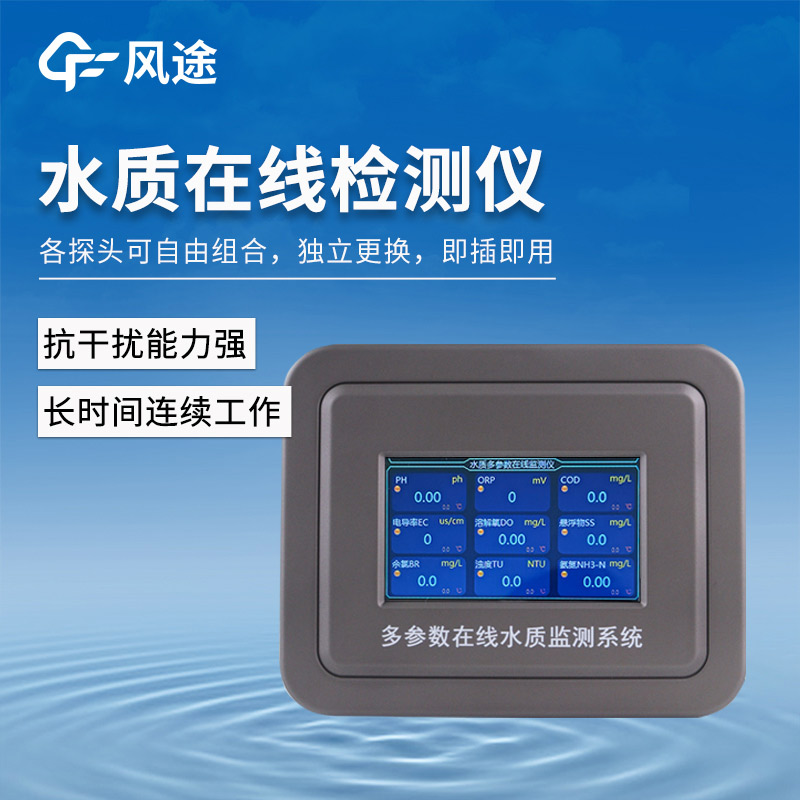Shandong Fengtu IOT Technology Co., Ltd
Sales Manager:Ms. Emily Wang
Cel,Whatsapp,Wechat:+86 15898932201
Email:info@fengtutec.com
Add:No. 155 Optoelectronic Industry Accelerator, Gaoxin District, Weifang, Shandong, China

Sales Manager:Ms. Emily Wang
Cel,Whatsapp,Wechat:+86 15898932201
Email:info@fengtutec.com
Add:No. 155 Optoelectronic Industry Accelerator, Gaoxin District, Weifang, Shandong, China
time:2025-07-07 09:10:56 source:Weather Station viewed:459 time
In the complex process of sewage treatment, the concentration of suspended solids (sludge) is a crucial indicator that affects the entire treatment process and final water quality. Suspended solids refer to the solid substances intercepted on a filter and dried to constant weight at 103–105°C after water sample filtration. The suspended solids in sewage come from various sources, including domestic sewage, surface flushing water, and waste generated in industrial production processes.
When a large amount of suspended solids enter the system, they form sediments on the surface of equipment, affecting equipment heat dissipation and ventilation. In severe cases, this can lead to malfunctions, increasing equipment cleaning and maintenance costs. In the sedimentation stage, excessive suspended solids will make the sludge in the sedimentation tank thin, reducing sedimentation efficiency. They will also adhere to the tank walls and bottom, forming difficult-to-remove deposits.
The presence of suspended solids is related to the effluent water quality. Excessive suspended solids will make the effluent turbid, and harmful substances in it are difficult to be effectively removed, hindering subsequent treatment and utilization, and posing potential threats to the environment and human health. For example, when the concentration of suspended solids in sewage is too high, it will prevent sunlight from penetrating, affect the photosynthesis of underwater plants, and disrupt the energy flow and material cycle of the aquatic ecosystem.
To accurately grasp the concentration of suspended solids in sewage, an Online Sludge Concentration Meter has become an essential facility for sewage treatment. Take FT-ZS10 as an example. It integrates high-precision water quality suspended solids sensors, measurement modules, communication modules, and data storage functions. Through the sensors, it can quickly and accurately measure the concentration of suspended solids in water and transmit real-time data to the control system or data center.
FT-ZS10 also supports the expansion of multi-parameter water quality sensors. In addition to suspended solids, it can monitor parameters such as ammonia nitrogen, ORP, pH value, dissolved oxygen (DO), conductivity, turbidity, and temperature. Users can flexibly select and combine sensors according to different needs and application scenarios.
The instrument can record and store historical monitoring data and alarm records, and supports the export of historical data in .xlsx format, facilitating long-term data preservation and analysis. In sewage treatment plants, FT-ZS10 can be used to monitor the concentration of suspended solids at the inlet and outlet to evaluate the treatment effect.

In the fields of atmospheric and tunnel environment detection, every data point is crucial for ensuring safety and the accuracy of decision - making. The FT - FT - SGT1 portable light transmittance detector emerges as your reliable detection partner.Operationally, the FT - SGT1 detector is extremely...
In many fields such as water conservancy, fishery, and navigation, accurately measuring water depth is a fundamental and crucial task. Whether it's the maintenance of waterways, the monitoring of reservoirs, or the control of the aquaculture environment, water depth data plays an indispensable r...
The negative oxygen ion sensor in the scenic weather station is a device specialized in monitoring the concentration of negative oxygen ions. It detects the negative ions in the air by utilizing ionization and is able to measure the amount of negative ions.This sensor has the following characteristi...
Most of the new energy research and development work is actually carried out in a relatively open environment, especially for wind and solar energy research and development, often due to the installation of the environment is very open caused by some important devices are easily affected by changes...